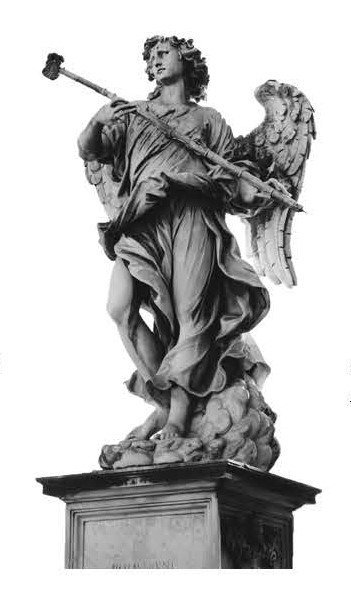
Sculpture
I’m in favor of art that does something other than just sit on its ass in a museum. — Claes Oldenburg
Introduction
Pablo Picasso (1881-1973)
Constantin Brancusi (1876-1957)
Naum Gabo (1890-1977)
Alberto Giacometti (1901-1966)
All of the sculptures cited in the essays in this chapter can be found online. We encourage you to view each one, and/or other sculptures of the same period, to fully experience the Simple Reality principle being discussed.
The abstract language of form that I have chosen has become
a new way to explore an interior life of feeling.
I wish to make an object that has a powerful presence,
but is at the same time inwardly turned,
seeming capable of intense self-absorption.
This quote is on a plaque in the Seattle Sculpture Garden next to a piece entitled Persephone Unbound (1999) by American sculptor Beverly Pepper (b. 1924). Beverly Pepper felt about her art what many feel when standing in front of any form of artistic expression or listening to music for that matter.
The path that leads to the experience of truth and beauty originates in the heart; it is a heart-felt experience not an intellectual understanding. For a sculptor the process of creating this experience involves expressing the relationship between volume and void.
“A work of sculpture occupies the same walk-through space that we do; it has height, width, and depth, just as any other object in our three-dimensional world. It can thus imitate reality even more closely than a painting. Within this frame of reference, the conflict between reality and art is more extreme for modern sculpture.”[i] The conflict author Robert Frier in his book Adventures in Modern Literature is talking about occurs in the context of P-B which is itself an illusion and unresolvable.
The dispute we are engaged in in this book is between expressing the perfection of beauty as a universal creative act and allowing a false-self reaction to make judgments relating to beauty which it is unqualified to make. If a work of art is created in the flow of the present moment as a response to life then it is, by definition, beautiful. No critic caught up in the illusion of historical time and space has the consciousness or the depth of understanding to judge the creative expression of another person.
Returning to the flow of artistic expression relating to three-dimensional sculpture we can trace the emergence of modern sculpture to the Cubists. “By stressing the geometric structure of form, the Cubists recalled to modern consciousness that all volumes are made up of a series of planes.”[ii] Organizing the planes that create the volume of a sculpture is the challenge facing the modern sculptor. “Pablo Picasso’s Woman’s Head [1909] is a prime example of the Cubist solution of the problem.”[iii]
Many purists found Picasso’s sculptures to be an unacceptable solution in combining the three-dimensional planes to create artistic beauty. Constantin Brâncuși avoided those critics who were trapped in the old worldview by producing highly polished and totally abstract sculptures. His Bird in Space (1923) is an extremely simplified metaphor of flight. No critic would dare say that it was anything but beautiful.
Naum Gabo tackled yet another problem encountered by sculptors, which is that of reducing the distinction between volume and void or “full” and “empty” space. “His Linear Construction, Number 4 (1962) is not only made of plastic and reinforced steel, it also exhibits a distinctively modern solution to the permanent problem of sculpture. By creating his areas of volume with fine threads of plastic, a translucent material, Gabo solved the problem by implying an interpenetration of ‘full space’ and ‘empty space.’”[iv]
In the case of the figures of Alberto Giacometti, we feel this presence of solid form and the empty spaces around and in between. “The tension that exists between the figures and the void they define lends Giacometti’s sculpture enormous expressive power.”[v] Henry Moore was also interested in the relationship between volume and space and his solution as a sculptor is exemplified in his Reclining Figure (1963) at Lincoln Center.
It can be said that as artistic expression has evolved, artists are beginning to take a more wholistic approach to solving the problems of color, composition, line, perspective, depth and subject matter as well as the relationship of volume to space. Our sculptors are helping to lead all of us to the truth of Oneness. All aspects of Creation are interconnected, interrelated and interdependent and that is a beautiful realization.
Introduction
[i] Frier, Robert. Adventures in Modern Literature. New York: Harcourt, 1970, page 497.
[ii] Ibid.
[iii] Ibid.
[iv] Ibid., page 498.
[v] Ibid.
Sculpture Table of Contents
- The Story and Art
- The Origin of Evil and Existential Anxiety
- Awakening to Beauty
- Suffering and Beauty
- Art, Power and Sex
- Perfection Now
- The Intellect Supreme
- Awakening: A Shift into NOW
- Harmony in the NOW
- Simplicity
_________________________________________________________
Find a more in-depth discussion in books by Roy Charles Henry.


